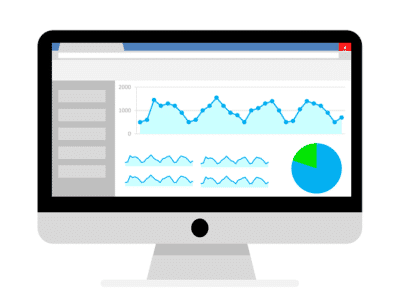Today’s CRM software automates everything from sales and marketing to customer service and accounting.
Over the last decade, CRM software has really come a long way. In the early days, some thought of CRM as nothing more than a contact database on steroids. But today’s CRM software automates everything from sales and marketing to customer service and accounting. And if you put it to work the right way, you can tap into hidden revenue opportunities and significant cost savings across your business.
CRM Lowers Cost of Sales
Many businesses implement CRM software primarily to help find and attract new business. And indeed, software like Sage CRM can help you do that at a lower cost-of-sale than traditional methods where salespeople manage contacts, leads, and opportunities in spreadsheets and offline folders – an inefficient manual approach that requires more people, more administration, and more cost.
With Sage CRM, your salespeople have a single point of access to contacts, calendars, meetings, follow-up tasks, accounts, call lists, sales opportunities, pipeline reports, and everything else they need to produce more revenue per sales hour. And with automated workflow built right into the software, they’ll spend more time selling and less time juggling administrative tasks and paperwork.
Tapping Hidden Revenue
Some businesses don’t realize that CRM software can also help breathe new life into your existing customer relationships. In fact, for many companies, those relationships are often more profitable after the initial sale. That’s where software like Sage CRM comes in.
You can track your customers’ sales history, buying patterns, communication preferences, and other important data that will help you deliver highly-targeted and timely follow up. With Sage CRM, you’ll uncover cross-sell opportunities and maximize the lifetime value of every customer relationship.
CRM and ERP: Even Better Together
The goal of any good CRM system should be to integrate everything you know about your customers into a single location. With Sage CRM and Sage 100, you’ve got one less thing to think about because the integration between ERP and CRM is built-in.
Everyone who has contact with a customer – whether it’s a salesperson or someone on accounting staff – has up-to-date customer information on-hand. That means salespeople have access to recent shipments or customer credit status without fumbling around in the accounting system. It also means that when a salesperson enters a quote or order in Sage CRM, the data is automatically transferred into Sage 100. Accounting no longer has to re-enter the same order data from hand-written notes or printed reports from sales.
A lot has changed over the years – Sage CRM is no longer a narrowly-focused contact management tool. It has become an important technology for bridging the gap between departments, lowering the administrative burden and cost of sales, and tapping into hidden revenue opportunities across your business.
If you would like more information about Sage CRM or have questions, please contact one of our software consultants today at 1.800.232.8913.
©2019 Juice Marketing, LLC. All rights reserved. This article content may not be reproduced (in whole or in part), displayed, modified or distributed without express permission from the copyright holder. For permission, contact http://www.juice-marketing.com.

